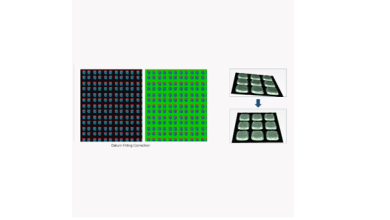Comparison and Contrast Essay Writing: Analyzing Similarities and Differences

Are you tired of staring at a blank page, desperately seeking inspiration for your essay? Whether you’re a student grappling with an assignment or an aspiring writer eager to enhance your skills, understanding how to effectively analyze similarities and differences is a vital tool in your arsenal. These essays provide a unique opportunity to explore connections and distinctions between subjects, offering valuable insights into their intricate tapestry.
Therefore, the purpose of this article is not only to provide a website that writes an essay for you, but rather to offer a comprehensive guide to crafting a comparison and contrast essay that delves deep into the analysis of similarities and differences. By following the principles and techniques outlined here, you’ll be equipped to tackle any comparison and contrast essay with confidence and finesse. So, let’s embark on this enlightening journey together and unlock the secrets of effective analysis.
Understanding Comparison and Contrast Essays
Comparison and contrast essays, like a dance of ideas, intertwine the similarities and differences between two or more subjects. They are the intellectual waltz, guiding readers through a graceful exploration of connections and distinctions. In these essays, we delve deep into the intricacies of each subject, unveiling their unique characteristics and unraveling the tapestry of human experience.
Just as a skilled artist blends colors on a canvas, analyzing similarities and differences in essays reveals the vibrant hues of knowledge. It allows us to unearth patterns, unravel complexities, and gain a deeper understanding of the world around us. By exploring both shared characteristics and contrasting elements, we sharpen our critical thinking abilities and cultivate a more nuanced perspective.
Like a well-crafted restaurant experience, effective comparison and contrast essays leave a lasting impression. They possess clarity, coherence, and creativity, guiding readers through a seamless exploration of similarities and differences. These essays showcase balance, offering unbiased evaluation while stimulating intellectual growth. Through engaging storytelling and meticulous analysis, they leave a lasting impact on readers, inspiring them to view the subjects in a new light.
Choosing a Topic
Just as a puzzle requires distinct pieces to fit together, selecting subjects with clear similarities and differences lays the foundation for a compelling essay. Choose subjects that share commonalities, yet possess distinctive characteristics or perspectives. This ensures a rich and fertile ground for exploration, allowing for meaningful insights and captivating analysis.
Like a lens that magnifies certain aspects, the scope and focus of your essay shape its purpose and direction. Consider the depth and breadth of your analysis, and the level of detail you wish to explore. Whether you aim to compare specific aspects within subjects or provide a comprehensive examination, clarifying your essay’s scope ensures coherence and relevance.
The creative process of brainstorming, akin to an artist sketching rough ideas, helps generate a plethora of topic ideas. Engage in techniques such as mind mapping, freewriting, or listing to unlock a world of possibilities. Explore diverse areas of interest, follow your curiosity, and let your imagination roam freely. This open-minded approach will lead you to the perfect topic that ignites your passion and curiosity.
Structuring the Essay
In the grand opening act of your essay, the introduction paragraph serves as the inviting prologue. It sets the context for the subjects to be compared and contrasted, piquing readers’ curiosity and drawing them into your essay’s world. Additionally, it culminates in a thought-provoking thesis statement that guides readers through the journey of analysis, inviting them to explore the intricacies of similarities and differences.
Body paragraphs: Analyzing similarities and differences
Topic sentence: Identifying the specific aspect to be compared and contrasted:
- Each body paragraph acts as a distinct movement in your essay’s symphony. With a well-crafted topic sentence, you introduce the specific aspect or theme that will be explored within that paragraph. This sentence serves as a guiding star, directing readers’ attention and focusing the analysis on a particular facet of comparison or contrast.
Point-by-point structure vs. block structure:
- Just as a skilled architect designs structures with purpose, you have the freedom to choose the organizational structure that best suits your essay. The point-by-point structure allows for a dynamic interplay between subjects, examining each aspect of comparison and contrast in a balanced manner. On the other hand, the block structure presents a comprehensive analysis of one subject followed by another. Select the structure that enhances the clarity and coherence of your analysis, allowing your insights to shine.
Supporting evidence and examples for each point:
- Like a master storyteller, you weave a compelling narrative through supporting evidence and examples. These literary threads lend weight and credibility to your analysis, grounding it in concrete details and real-world contexts. Utilize relevant data, quotes, anecdotes, or expert opinions to strengthen your arguments and engage your readers. Each piece of evidence adds depth and flavor to your analysis, bringing it to life.
As the final notes of your essay reverberate, the conclusion paragraph emerges to deliver a resounding finale. Here, you summarize the main points explored in your essay, weaving them together in a harmonious melody. Emphasize the significance of the analysis, leaving readers with a lasting impression and a newfound appreciation for the subjects studied. Just as a memorable performance leaves the audience yearning for an encore, let your conclusion resonate with your readers, inspiring further contemplation and reflection.
Analyzing Similarities
Within the vast landscape of comparison and contrast lies a treasure trove of shared characteristics and features. It is your role as the essay virtuoso to uncover these hidden gems, illuminating the common ground between your subjects. Delve deep into their essence, unearthing the threads that connect them in profound and unexpected ways.
Strategies for organizing and presenting similarities
Chronological order
Just as time weaves a narrative tapestry, organizing similarities in chronological order presents a logical progression of events or development. This approach works well when exploring the historical evolution of subjects or tracing their timeline of achievements and milestones.
Order of importance
Like a skilled composer arranging notes in a symphony, organizing similarities in order of importance allows for a crescendo of impact. Begin with the most significant shared characteristics, building towards a climax that leaves a lasting impression on your readers.
Categorical order
Imagine organizing similarities into distinct categories, much like a meticulous librarian sorting books onto shelves. By grouping shared characteristics into meaningful categories, you create a clear framework for analysis. This approach is particularly effective when exploring subjects with multifaceted aspects or diverse dimensions.
Analyzing Differences
In the vast tapestry of existence, contrasting characteristics and features weave intricate patterns, offering insights into the diverse nature of subjects. As an astute observer, it is your task to discern these contrasts, illuminating the distinct facets that set your subjects apart.
Strategies for organizing and presenting differences
Point-by-point comparison
Like a skilled debater, you can engage in a point-by-point comparison, dissecting the contrasting aspects of your subjects in a methodical manner. By addressing each difference individually, you provide a comprehensive analysis that dissects the intricacies of each subject, inviting readers to explore the rich tapestry of distinctions.
Subject-by-subject comparison
Just as a skilled curator arranges artworks for an exhibition, a subject-by-subject comparison invites readers on a journey through each subject, analyzing their differences in detail before moving on to the next. This approach provides a comprehensive exploration of each subject, allowing readers to fully grasp the uniqueness of each.
Combination of both approaches
As a versatile essay virtuoso, you have the freedom to blend the point-by-point and subject-by-subject approaches, creating a customized structure that best suits your analysis. By strategically interweaving these approaches, you can provide a holistic exploration of differences, capturing the intricacies and nuances of each subject while maintaining a clear and engaging flow.
In conclusion, the art of comparison and contrast essay writing unveils a world of intellectual exploration and insight. By analyzing similarities and differences, we unlock a deeper understanding of the subjects we study, unraveling the complexities that shape our world. Throughout this comprehensive guide, we have delved into the essential elements of crafting a compelling comparison and contrast essay.





